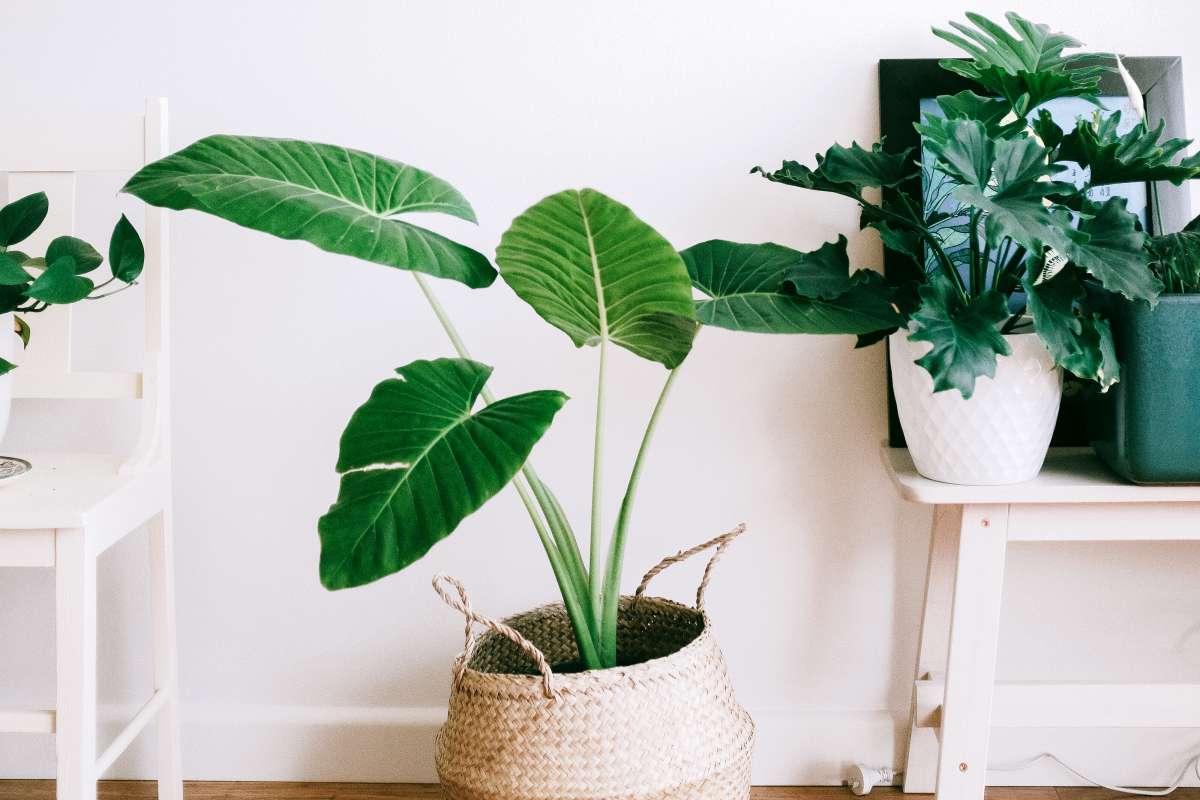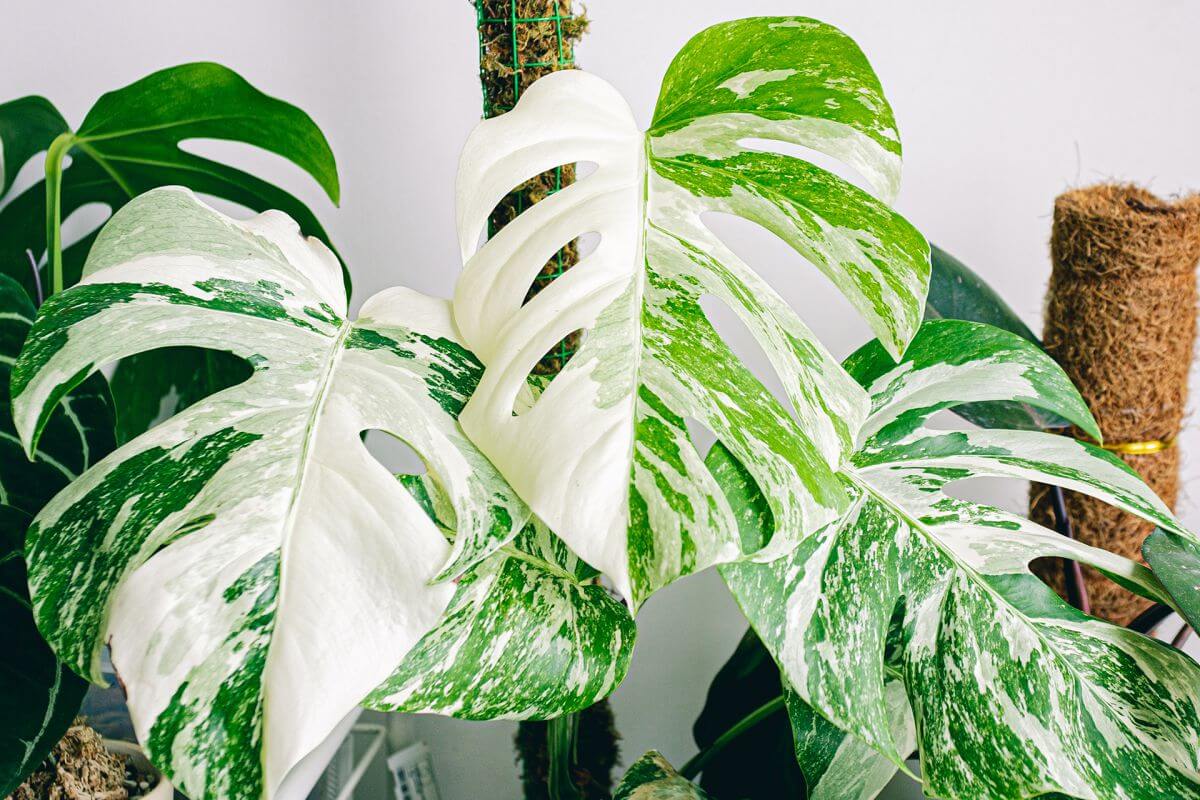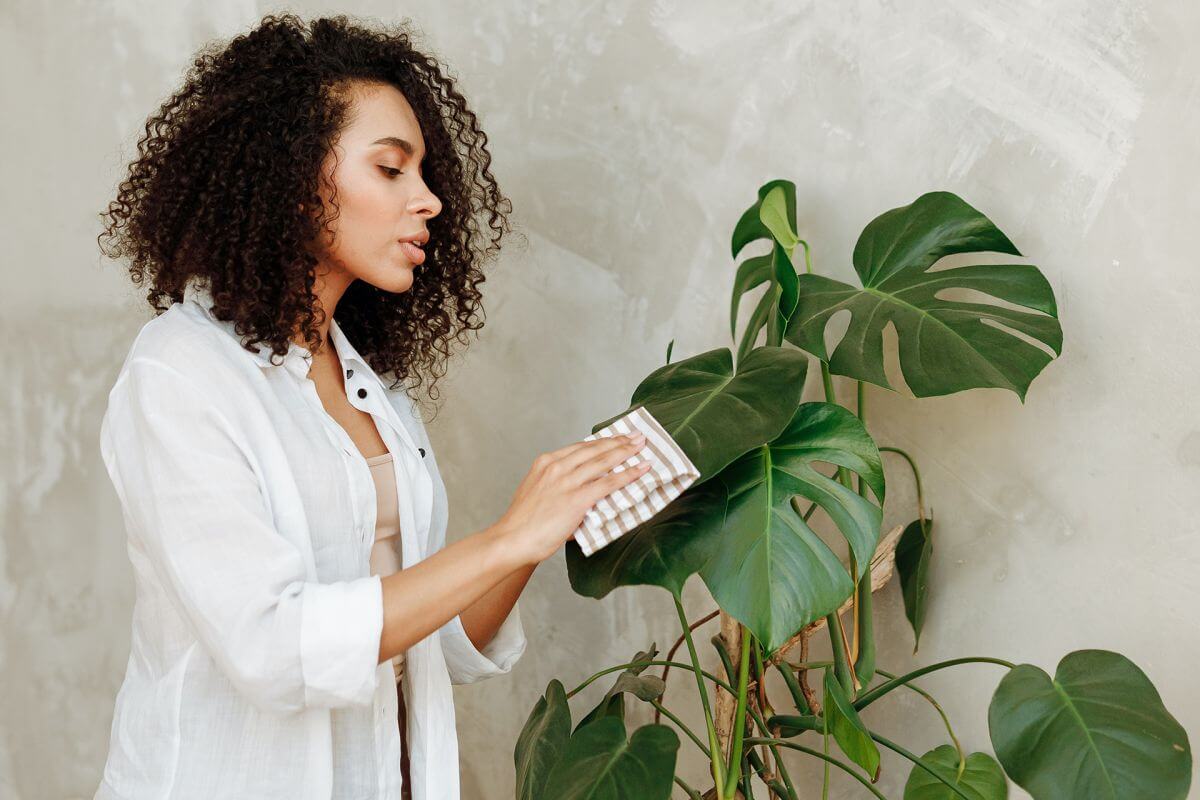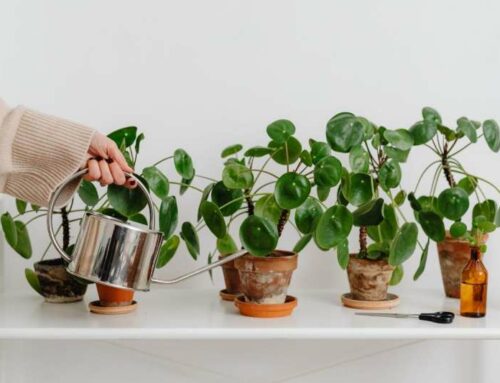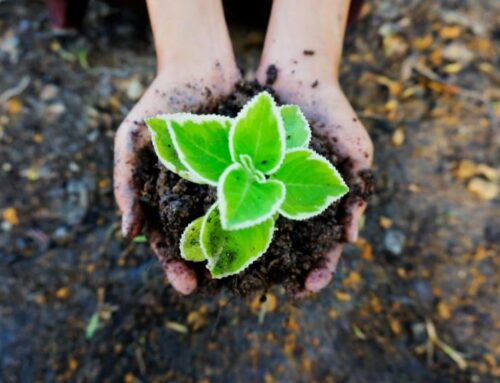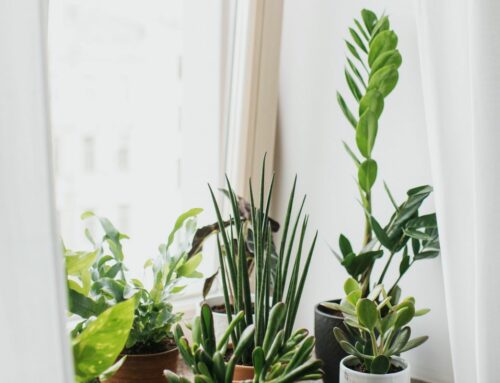What are the basic things to keep in mind when it comes to houseplant care? In this article you’ll find the top 101 things that you need to know to make your plant-growing journey an easy and a hassle-free one.
With some care, love, and knowing the basic “dos” and “don’ts” when it comes to houseplants care, your plant-family will grow and thrive. This article is specifically for you if you are a beginner plant-parent. In this guide are summarized the main things to keep in mind when caring for houseplants and it should help you put you on the right path of having a green thumb right from the start. So Houseplants 101 here we go.
This post may contain affiliate links. Read our full Privacy Policy and Disclosure here.
Watering
In most cases, water is the number one factor that can affect the most a plant’s health and its development. That’s why I have decided to start this Houseplant Care 101 Guide exactly with water.
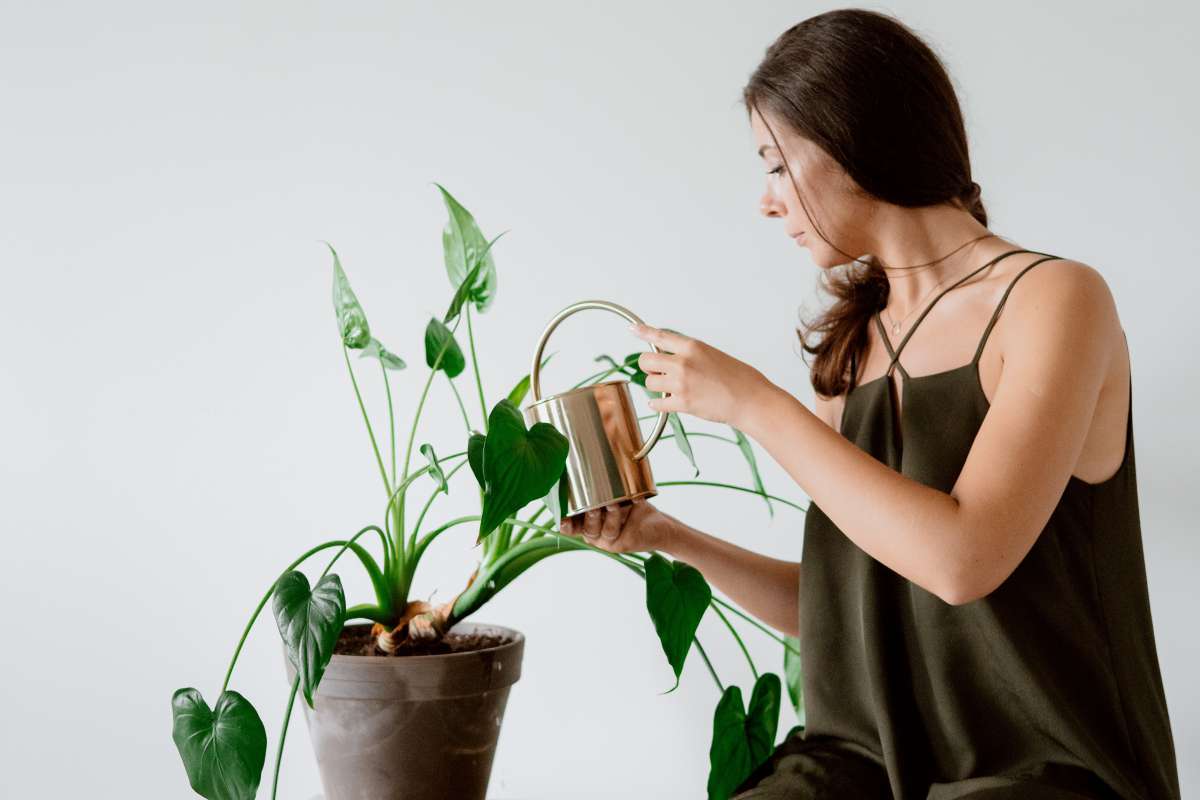
So what are the top things to keep in mind when it comes to watering plants?
- Does your plant have droopy leaves? Then it could be a sign that it could use a drink.
- If the pot of your plant feels light when you lift it up, your plant is probably thirsty.
- Are there brown dry spots on the leaves of your plant that initially start as a yellow halo? This indicates an over-watering issue.
- Use a water-meter when you are insure when your plants need to be watered.
- Alternatively, do the finger test. Check if the top 2-4cm of the soil are dry, if they are, then your plant could be due for a drink.
- Does the pot of your plant feels heavy days after you have watered it? It could be a sign that your plant might be water-clogged, root-bound or that the soil which you are using does not have enough drainage.
- If your plant is continously weeping days after the last watering, it could indicate a water-clogging, root-bound or soil-density issues.
- Always water your plants with room-temperature water. Extreme temperature changes can damage the roots and weaken the plant.
- Most plants die from over-watering rather than underwatering.
- Always water your plant thoroughly – until water drips out – this always for any unused nutrients that the plant just did not need to be washed off.
- Bottom-watering your plants is a great wait to ensure that the entire soil was soaked evenly and fully.
- If you do not have rainwater to water your plants with, always let your tap water stay for at least 24 hours before watering your plants.
- Plants usually require less water when the weather is colder. And vice versa.
- Most houseplants would need to be watered about 1 time per week during the growing season (Spring and Summer).
- Always use a pot for your plants that has a hole. Always. I do not mind what people sell or how cute they look like. You need that water to drain from somewhere. Get yourself a pot with a hole and a saucer. Period.
- Over-watering a plant is one of the main reasons plants get sick.
- Over-watering a plant is actually the main reason houseplants die.
- If you have over-watered your plant and the soil is not getting any dryer, giving your plant extra light and warmness might help.
- Alternatively, if you have over-watered your plant and the soil is soaked for days, repotting your plant might help.
- Watering plants on a schedule does not really work.
- The switch between over-watering and under-watering plants is very stressful for them.
- Brown, dry edges on the leaves might be a sign of under-watering a plant.
Light
Light is another important factor when it comes to caring for plants. Too little or too much light can both affect negatively a plant’s health.
The essential tips to lighting plants are summarized below.
- If the plant grows slowly or does not grow at all, might be an indication that the plant needs more light.
- Too much light, on the other hand (especially direct sunlight) might stress a plant and then the leaves look sad and droopy.
- Direct sunlight might burn the foliage of a plant.
- If your plant is actively growing, it is a good sign that you have chosen the right location for it. Good job!
- Growing lights help a lot if you just do not have the right light conditions at your home. However, they can be expensive.
- Make sure that your plants’ leaves are dust free so that the plants can photosynthesize well.
- Plants love a routine, so if you are using a grow light, do not turn it on and off randomly. Create a schedule.
- Your plant needs adequate levels of light. If you have a room without a light source – please, get an artificial plant.
- You can train your plant to be accustomed to more light by gradually introducing it to a brighter and brighter spot.
- Baby plants and plants under stressed should never be placed in direct sunlight as they can easily burn.
- Most houseplants thrive in a location that is receiving bright, indirect light.
Fertilizing
You might be surprised but when it comes to fertilizing plants, less is usually more. Plants are a bit like humans in this matter and fertilizing them is like giving them an extra dose of a super vitamin. However, just like humans, if they get too much fertilizer, it can be bad for them.
The essential tips to keep in mind when fertilizing your plants are:
- Do not fertilise young plants with weak roots – the fertiliser might burn them.
- Under-fertilising is better than over-fertilising. Always dilute the fertiliser.
- Use the right fertiliser for the plant that you have.
- Never fertilise a plant that is not feeling well.
- Never fertilise a plant if the soil is completely dry.
- Consider a seaweed fertiliser to spray the foliage of your plants with.
- If you fertilise a plant, make sure to water it with fresh, clean water before and after feeding to avoid the roots burning from the fertiliser.
- When the weather is colder, fertilising should be done less frequently.
Replanting
Pots (or another type of enclose where you chose to grow your plants), is their own home environment. And each plant has its own preferences and needs when it comes to their ‘home.’

Choosing the right potting soil for your plant is vital but the pot itself can play a role determining its health and vigour. Here are the essential things to keep in mind if you are potting up or repotting your plants:
- Get the right soil for the right plant. Using improper soil mix migth lead to the plant getting sick. For example, plants that need their root system to breathe will not feel well in a potting mix that is too compact or sticky and lacks drainage.
- The PH level of the soil matters.
- If you just got your plant and it was shipped, always allow at least 2 weeks for the plant to rest before repotting.
- The best time to repot a plant is spring
- Most plants actually do not need to be re-potted unless they have outgrown their pot – the roots are coming out
- A lot of your plants (not all) will truly appreciate having a terracotta pot – unglazed clay pot.
- Make sure that the soil that you use for your plants is sterile.
- If you are reusing old soil, sterilise it first.
- If you are using a clay pot (terracota) for your plant, you will need to water the plant more often compared to using a plastic pot.
- When you are re-potting a plant, be very gentle with the roots! Having some old soil on the roots is better than ripping and damaging the roots.
- Most store-bought houseplants will benefit from re-potting them soon after getting them.
- It all starts with the soil. A bit like us humans – whatever we feed ourselves with, it will show. Same goes for plants.
Humidity
When it comes to plants and humidity, there is no one size fits all. Some like it, some don’t. Some plants would really appreciate higher humidity levels but almost all can be acclimatised to not be too picky about it and to thrive at normal room conditions.
The top things to keep in mind when it comes to houseplands and humidity are:
- A humidifier is a great investment when you are a plant parent.
- Do not place plants next or on top of your heater.
- High humidity is great for roots formation.
- For some plants, high humidity can lead to leaf rot. Ensure appropriate air circulation around the plants.
- Most tropical plants will appreciate more humid environment.
Propagating Plants
If you have a good houseplant care routine, then probably, sooner or later, your plants will start outgrowing their chosen spots. And that’s when the most fun part begins – propagating plants! Propagating plants is a great way to multiply your plant collection and to have home-made little gifts of nature for friends and family.
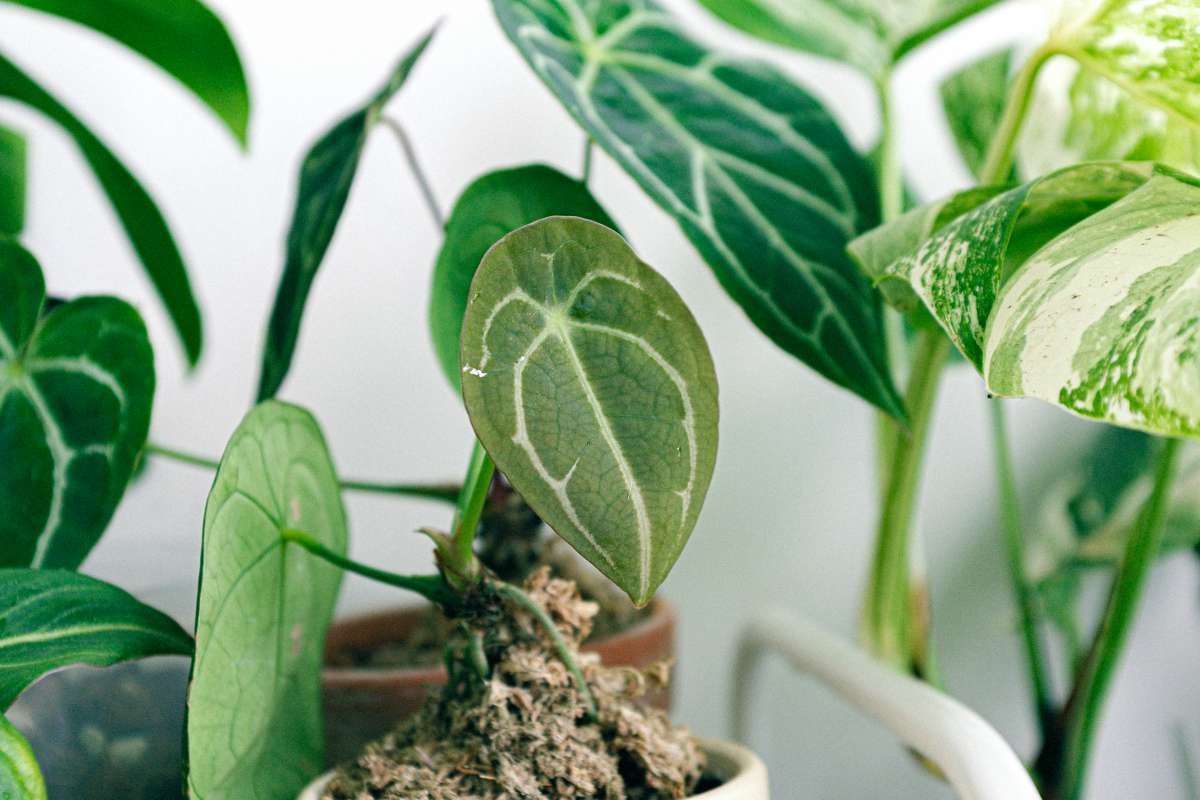
Unfortunately, plants propagation is not always easy and sometimes cuttings or seedlings die off. So to avoid that, here are the essential things to keep in mind when it comes to propagating plants:
- Propagation of most plants is best done in spring and summer.
- Water-propagation is what most people do – but it is the most unnatural.
- Water roots are NOT soil roots.
- Aerial roots are NOT soil roots.
- You cannot propagate a plant that has no node.
- Always use a sharp tool (knife, gardening scissors) when you are cutting a plant for any reason.
- Always disinfect your cutting tool between EACH cut.
- Using clean gloves when touching plants for repotting or propagation is always a plus.
- When you are propagating any plant, make sure that it is placed in a bright and warm location.
- If your temperatures are below 23C (74F), a heating map can really help for propagation.
- If you cannot give enough light to the plant that you are propagating, growing lights can really help.
- Propagating a plant is never a 100% thing. Be prepared to fail.
Tips for Variegated Plants
Plants with stunning foliage in various colours have been captivating people’s hearts for years. A plant with some level of variegation has probably caught your heart too at some point. Variegated plants have similiar plant care requirements like their green sisters but they slightly differ.
Here are the top things to keep in mind when caring for a plant that is variegated:
- Brown spots on the variegated parts of a variegated plants are in most cases just normal and something that you will have to learn to live with.
- Variegated plants need more light than non-variegated ones.
- Variegated plants usually grow slower compared to non-variegated plants.
Pests and Diseases
Being a plant-parent is immensely rewarding and fun. However, from time to time, there are also unwanted visitors, like various types of pests and diseases on plants. Bummer, I know. But the good news is that most pests and plant diseases are manageable if caught early on.
Here are the top things to keep your plants free from pests and diseases:
- Not every spot is a reason for concern.
- Pests infestations are very manageable if caught early.
- Always isolate a sick plant from the rest of your plants.
- If you are introducing a new plant to your plant family, isolate it for good 2 weeks from the rest and observe that it did not come with any bugs or diseases.
- Most plants are not fond of wind. Protect them.
- Wash your hands if you are touching multiple plants. If one of them has an infection that you did not catch, washing your hands might prevent it from spreading to your other plants.
- Plants might get sick and die. It is fine, you can’t safe all.
- Some plants will shed off their older leaves when new growth occurs (Thai constellation, I am looking at you). There is nothing you can do about it, I am sorry.
- Ensuring air circulation around your plants is the number one prevention method against most fungus types. I.e. fresh air is good for you but also for your plants.
- Avoid getting water on the foliage of your plants. It is a risky business and can lead to bacterial or fungal infections.
- Brown dry edges on your plants leaves might be mostly due to low humidity or underwatering.
- Brown dry spots on your leaves that start as a yellow halo and appear sectional on a part of a leaf without any particular shape or pattern, are mostly due to an overwatering issue and not any fungal or bacterial infection.
- Fungal infections show as spots on the whole surface of a leaf and they have a pattern. They are round and are surrounded by a yellow halo. Fungal infections can spread rapidly.
- Bacterial infections look like water-soaked spots which are brown and surrounded by a yellow halo. They have no pattern and are randomly shaped.
- Spider mites can kill a plant quite fast if left untreated. Brrr.
- Thrips are actually hard to get rid off than spider mites but thankfully, unless it is a real real infestation, they only cause cosmetic damages.
- Most pesticides should be used with caution as they are definitely not bee-friendly.
- Introducing beneficial insects (like ladybug-larvae) can be your best way to control pests and keep their populations down. But it can be a slow method to deal with pests and also, an expensive one.
- Always double check if your really really need to use pesticides and fungicides as they will also destroy any beneficial organisms.
- Not all insects are bad.
- Lets talk about fungus gnats. Those annoying small flies that seem to be everywhere. Do not become over-worried about them as they are just annoying to you but will not really damage your plant. Use yellow sticky cards for them.
- Want to know if you have thrips? Use blue sticky cards in the pot of a plant.
- If you want perfectly looking plants – get plastic ones. Plants (just like humans) are imperfectly perfect.
- Stunned and deformed new growth might indicate that your plant either needs more humidity, more light or a more regular fertilising schedule.
Extra Tips
- Plants do not live forever.
- Houseplants might be toxic to you or your pet. Never attempt to eat a houseplant (or parts of it) without being absolutely sure that it is an edible one.
- Plants do not like to be touched. It stresses them.
… and most importantly
- Plants are alive, they need care and nurture. Please, familiarise yourself with the plant and what it needs before getting it.
Houseplant Care 101: Final Thoughts
In this short houseplant care guide the main things to keep in mind in terms of plant care were summarized. This article is a great short read for plant beginners as important tips to remember in terms of watering, fertilizing, lighting and propagating plants.
To summarize, the following 3 are the main things to keep in mind in terms of houseplant care:
- to avoid overwatering a plant always check its soil moisture level before watering
- provide it with sufficient light
- regularly inspect it for pests
… and your houseplants should be happy and healthy. Happy growing! ♡
If you are wondering what are the care requirements of a particular plant that you have, make sure to check out the detailed Plant Care Guides that we have available at LEAFnJOY. We have written them based on first-hand experience and with you in mind as we understand that, especially if you are a plant beginner, keeping up with the care needs of different plants can get overwhelming at times. So we hope that our detailed houseplant care guides will ease your plant care routine and help your green family members thrive!

